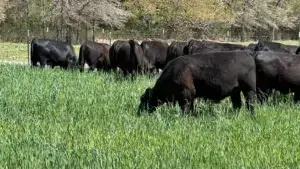If there’s a forage crop everyone should know the history of, it’s alfalfa. Alfalfa is one of the oldest cultivated forage crops, thought to have roots that date back to southwestern Asia — specifically, in present day Iran — over 6,000 years ago.
When brought to the Americas, native populations quickly realized that alfalfa was a great source of food not only for people, but livestock as well. Since then, alfalfa has quickly spread in popularity across the U.S. as feed for livestock. With such a rich history, here’s some facts about alfalfa to keep you on your toes:
TIMELINE:
490 B.C.: Alfalfa was brought to Greece from Iran as horse feed for the Persian army.
1775: Alfalfa was brought to the Americas and thrived in Chile, Argentina and Uruguay
1836: Catholic missionaries brought alfalfa to Texas, Arizona, New Mexico and California.
1857: A hardier variegated strain of alfalfa was introduced via Wendelin Grimm, a German immigrant living in Minnesota.
QUICK STATS:
- $11.7 billion is the estimated annual value of alfalfa in the U.S.
- 26 million is the amount of acres of alfalfa cut for hay in the U.S.
- 2.3 tons is the average yield per acre of alfalfa in the U.S.
- 22% is the amount of crude protein found in alfalfa, along with 10 other different vitamins.
FUN FACTS:
- Alfalfa is considered the most important forage crop grown in North America because it is a tetraploid, but research on alfalfa has lagged behind due to difficulties.
- The oldest writings of alfalfa date back to 1300 B.C. in Turkey.
- California produces 9% of the nation’s alfalfa hay, and harvests over seven million tons annually.
- George Washington was the first president to grow alfalfa.
- Alfalfa roots can penetrate over 15 feet into the ground.
Sources: Barr-Ag, USDA, UC Davis
Want to read more histories of crops? Visit:
Asparagus: A Vegetable for Royals
Tomatoes’ Roots Trail Back Further than Campbell’s…












